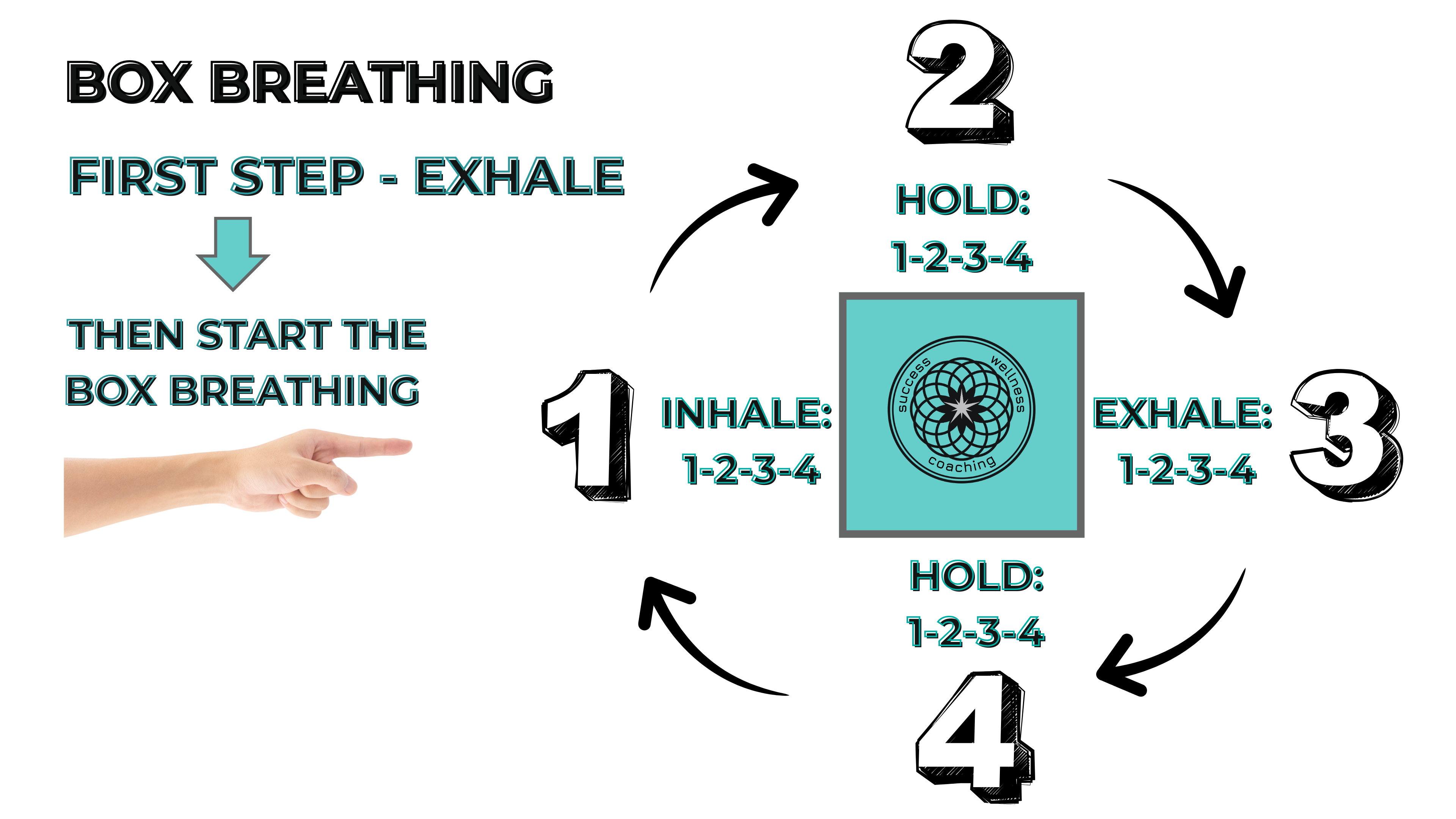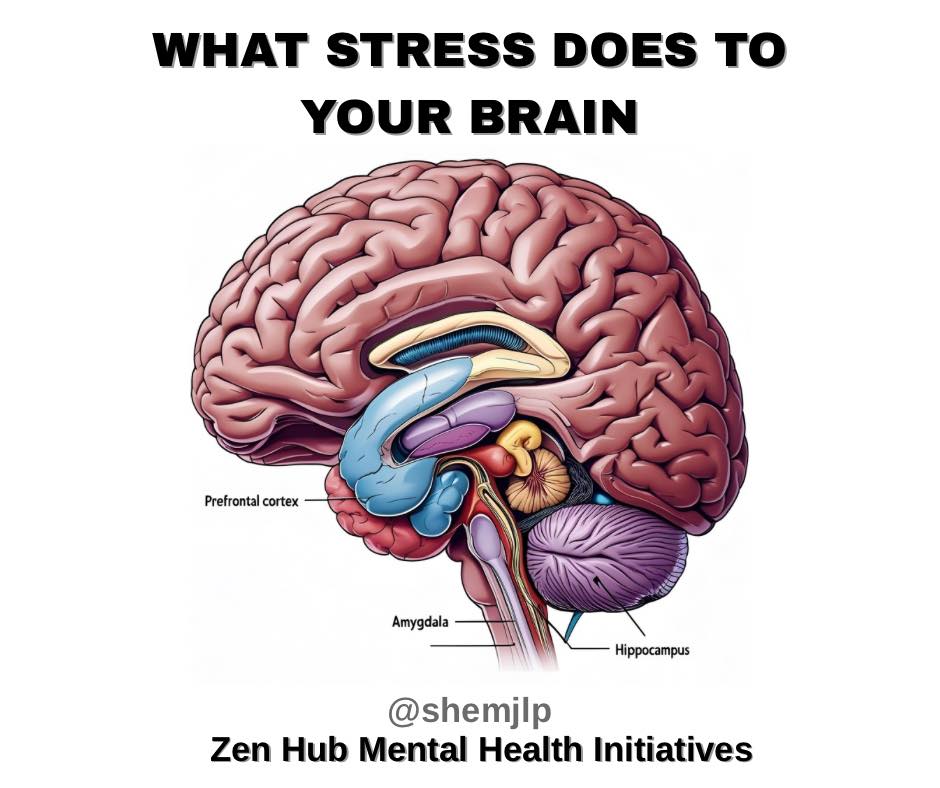Science Explains How to Stay in Control When Life Feels Overwhelming

It’s that sinking feeling. Your inbox is full, your to-do list seems endless, and your brain just feels like it’s shutting down. This is not a personal failure. It is a normal biological response.
Here is what is happening. Your brain’s alarm system (the amygdala) takes over your “thinking” brain (the prefrontal cortex). This “amygdala hijack” is the real reason you start feeling overwhelmed. Your brain thinks it is in danger and goes into survival mode.
This article will not just tell you to “relax.” That does not work. Instead, we will give you a step-by-step, science-backed toolkit. You will learn how to calm your body, clear your head, and show you exactly how to stay in control.

🧠 Master Your Mind:
Science-Backed Control Strategies
Understanding and managing overwhelm through neuroscience
💡 5 Scientific Strategies to Regain Control
👆 Click each strategy to discover the full technique
How to Do It:
❌ Don’t say: “I’m so stressed!”
✅ Do say: “I’m feeling overwhelmed by the Friday project deadline.”
The Technique:
1️⃣ Breathe IN for 4 counts
2️⃣ HOLD for 4 counts
3️⃣ Breathe OUT for 4 counts
4️⃣ HOLD for 4 counts
How It Works:
❌ Big task: “Clean the entire kitchen”
✅ Micro-action: “Put one dish in the dishwasher”
Two Techniques:
1️⃣ Third-person: “Why is [Your Name] feeling anxious right now?”
2️⃣ Best friend: “What advice would I give my best friend in this situation?”
The Key Insight: The “Schedule” box (Important but Not Urgent) is where you prevent future problems. Make time for what truly matters.
Crises, deadlines, emergencies
Planning, exercise, relationships
Interruptions, some emails
Time wasters, busy work
First, Understand the Science of “Feeling Overwhelming”
Before you can fix that feeling, you need to know why it happens. When you are feeling overwhelmed, your brain is not failing you. It is protecting you. This reaction has a name: the “amygdala hijack.” Expert Dr. Daniel Goleman explains this is your brain’s alarm system (the amygdala) taking over. It treats your giant to-do list like a life-threatening danger, similar to a tiger.

Your brain then goes into a “fight, flight, or freeze” mode. This response shuts down the “thinking” part of your brain, your prefrontal cortex. This part handles planning, but it has a limit on how much it can handle at once. This limit is your “cognitive load.”
When you pass that limit, your brain simply stops. This is what feeling overwhelmed truly is. It is not a sign of weakness. It is a biological signal. Your brain is just telling you that your current system is overloaded and you need a new strategy.
Strategy 1: “Name It to Tame It” (Affective Labeling)
Your mind is racing and you feel panicky. The fastest way to slow this down is a simple trick: just name the feeling. This is a real scientific coping strategy called “affective labeling.” Research from UCLA’s Matthew Lieberman shows that just putting a specific feeling into words instantly calms your brain’s alarm system.

Here is why that works. When you are stuck in a feeling, your emotional brain (the amygdala) is in charge. But when you label that feeling, your brain activity moves from the emotional part to your “thinking” part (the prefrontal cortex). This simple act puts your thinking brain back in the driver’s seat.
Here is how you do it. Stop saying “I’m so stressed!” That is too vague and your brain cannot solve it. Get specific. Say exactly what you feel and why: “I am feeling overwhelmed by the Friday project deadline.“

This moves you from a big, messy feeling to a single, clear problem. Instead of “My house is a disaster,” try “I feel anxious about the pile of dishes by the sink.” This pinpoints the problem, which is the first step to controlling it.
Strategy 2: Manually Control Your Physiology with Box Breathing
When your heart is pounding, you cannot just tell yourself to calm down. Your body is already in panic mode. You must breathe your way out of it, not think your way out. This is one of the most effective scientific coping strategies you can learn.
Your breathing directly controls your body’s “rest and digest” system. Changing your breath pattern is the fastest way to tell your brain you are safe. A simple, powerful technique for this is called “Box Breathing.” It is used by Navy SEALs to stay in control during very intense situations.

Here is how to do it.
- Breathe in slowly for a count of 4.
- Hold your breath gently for a count of 4.
- Breathe out slowly for a count of 4.
- Hold the empty breath for a count of 4.
Repeat this cycle for one or two minutes. This works by stimulating a large nerve called the vagus nerve. This nerve sends a direct “all clear” signal straight to your brain, stopping the panic response. This simple exercise is how you manually flip the “off” switch on stress and regain control of your life.
Strategy 3: Shrink the “Threat” with a Single Micro-Action
Now your brain is calm, but the huge task is still sitting there. It feels so big you do not know where to start. This is task paralysis. It happens because your brain sees the entire project, like “File Taxes,” and it just shuts down.
The secret to how to stay in control is to shrink the task. Make it so small that it seems almost silly not to do it. Your goal is no longer “Clean the entire kitchen.” Your new, tiny goal is “Put one dish in the dishwasher.”

This simple trick works because of something called the “Zeigarnik Effect.” This is a known psychological principle that means your brain hates unfinished tasks. It gets stuck thinking about them, which causes a lot of your stress.
When you complete even one tiny micro-action, you give your brain the relief it is looking for. That one small win breaks the paralysis and builds momentum. It proves to your brain that you are in charge, not the big, scary task.

A great way to practice this is with David Allen’s “2-Minute Rule.” The rule is simple: if you see a task that can be done in less than two minutes, do it right now. This stops small tasks from piling up and feeding your task paralysis.
Strategy 4: Create Psychological Distance (The “Fly on the Wall” Technique)
Sometimes, your own thoughts are the biggest problem. You get stuck in a loop of worry and panic. You need to get out of your own head and look at the situation like a “fly on the wall.”
This is a powerful scientific coping strategy called cognitive reframing. An easy way to do this is the “third-person” trick. Instead of saying, “I am so stressed,” refer to yourself by your name.

Ask, “Why is [Your Name] feeling so anxious right now?” It might feel odd, but it works. Researcher Dr. Ethan Kross found this “distanced self-talk” instantly creates emotional distance.
This small shift moves you from being inside the emotion to just observing it. Here is another simple way to do it. Ask yourself this one question:

“What advice would I give my best friend if they were in this exact spot?” You would likely be kind, calm, and have a good solution. Now, you can take that same smart advice for yourself.
Strategy 5: Separate the Urgent from the Important
You often feel out of control because your to-do list is a jumbled mess. Everything feels like a top priority, but it is not. Learning how to stay in control means knowing the difference between what shouts the loudest (urgent) and what matters the most (important).

A simple tool for this is the Eisenhower Matrix. It is a box with four squares that helps you sort every task. This helps you see what to do now, what to schedule, what to give to someone else, and what to just delete.
Here is the simple breakdown:
- Do: Urgent and Important (Crises, big deadlines).
- Schedule: Important but Not Urgent (Planning, exercise, family time).
- Delegate: Urgent but Not Important (Many interruptions, some emails).
- Delete: Not Urgent and Not Important (Mindless scrolling, busy work).
Here is the key insight. Most people feel overwhelmed because they live in the “Do” and “Delegate” boxes. They spend all day putting out fires or reacting to messages. They never make time for the “Schedule” box.
But the “Schedule” box is where you prevent future problems. When you make time for what is truly important, you will have fewer fires to put out later. This is how you stop being reactive.
Final Thoughts:
Learning how to stay in control is not a magic, one-time fix. It is a set of simple skills you can practice. It means learning to label your feelings, using your breath to calm your body, and taking one very small step forward.

You are not at the mercy of your feelings; you are the manager of your brain. By using these scientific coping strategies, you can regain control of your life. It all starts with one small choice, one breath, and one tiny action.
What is one micro-action you will take in the next 10 minutes? What one small thing will you do to move from feeling overwhelmed to feeling in charge? Let us know in the comments below.






